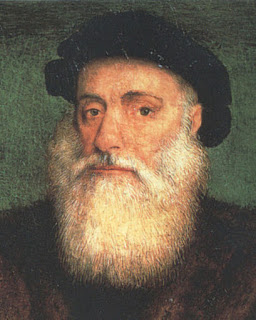The Renaissance
‘Renaissance’ literally comprehending the ‘rebirth’ era succeeding the horrendous Dark Ages, was a new beginning and a boom of literature, religion, politics, art, architecture, culture and fashion. Seeding in Italy and France, this cultural movement soon spread all over Europe. Renaissance represented a bridge built over the chasm of the traditional Middle ages and the new Modern Era.
The philosophy of scholars and scientists in this era was forward and challenged religion in a new way. The origin was known to be 14th Century Florence under the patronage of the Medici as Greek scholars and philosophical thinkers migrated to Italy.
Hence, power shifted to the hands of Italy with the Fall of Constantinople caused by the Ottoman Turks. The Islam reign flourished trades especially in Florence and other Italian cities, thanks to the Ottoman. Hence, we see Islam influence in the Renaissance architecture with their domes and Greek influence with their triangular structures. Renaissance saw the fusion and birth of a new art and architecture. This made Europe the capital of art, architecture and culture.
Intellectual theory like the Humanism was born, scientific theories and discoveries highlighted the period and art enhanced in a new form and expression. Raphael, Michelangelo and Botticelli were few of the greatest Renaissance artists who bought realism and human emotion to the art. The human anatomy was a common underlying subject in the art and literature of the period.
The sacrificing contributions of Galileo and Copernicus proved to be ground breaking for science and philosophy. Baroque art and music were also birthed in this era. A new self- awareness and Individualism spread through this era.
The costumes underwent a change too. Extravagance and opulence was seen in the costumes. People with power and wealth showcased the trends and the clothing was a representation of their social status. Silk, velvet, wool and other luxurious fabrics with padded clothing, voluminous wigs and tightened corsets were adorned. Men tend to wear short length hair with a flat cap tilted up on one end. Women wore handkerchief and headdresses on occasions.
Colours used were much darker, richer and bold like burgundy, gold and purple. Funnel and Leg-o-mutton sleeves were common along with the tight elaborate stockings. Lace, ruffles and intricate ornamental embroidery were common in Baroque fashion. As the society grew liberal, décolletage and flowing garments were more accepted.
Strings of various stones like pearl and diamonds were worn with ribbon among various women. A particular fad of having immensely high foreheads was common among the females too. The women’s garment structure seemed to be rounder or fuller with very narrow and high waistline.
Fur lined garments along with accentuated tunics were common among men. The cuffs started to become elaborate too. Women powdered their face extensively with lead and rosy tints to achieve optimum beauty. Hence, luxury highlighted the glorious era of renaissance in several aspects of the society which highlighted a certain freedom.















No comments:
Post a Comment